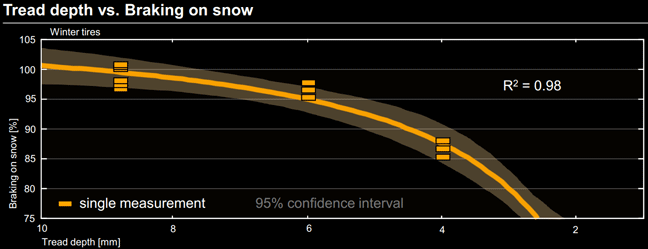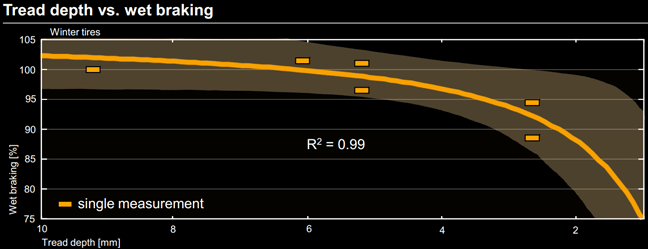Due to a number of cold and snowy winters, the UK population now understands winter tires both exist, and aren’t just for snow and ice - they also offer a real benefit when the conditions are cold and wet. This is why tire manufacturers recommend that for the highest level of safety during year round motoring, you should switch between dedicated summer and winter tires.

What you might not be so sure of is how the performance degrades as the tire wears. The UK has no particular laws surrounding winter tire use, but in parts of Europe where winter tires use is a legal requirement such as Germany, a winter tire is no longer deemed a “legal” winter tire below 4mm of tread depth, with some countries have the legal limit at 6mm!
The Test
To find out how snow performance degrades as the tire wears, Continental invited us to test its new Continental WinterContact TS860 at full tread depth (around 9mm), 4mm, and the legal UK limit of 1.6mm.

Testing inside the Arctic Circle, and driving new Audi A3s with 205/55 R16 tires fitted, a group of testers ran forty or so snow traction and braking runs on identical cars, in identical conditions fitted with the tires at the various tread depths.
The results plotted an interesting graph. The drop off wasn’t linear as you’d perhaps expect, from 8mm to 4mm tread depth, the reduction in braking performance per mm wear is around 2%, from 4mm to 2mm it doubles, to over 4% per mm. This means that when stopping from just 30 mph on snow, a tire at 4mm would take an extra 14 meters over a new tire to stop you, and at tire at 1.6mm a massive 26 meters!

Wet braking, which we didn't experience first hand due to conditions, is even more apparent, but not exclusive to winter tires. Like the snow, from 8mm to 4mm you lose approximately 2% per mm of tread, but at some point after 4mm the degradation doubles to over 8% per mm, largely due to the micro aquaplaning influence!

Why is this?
Winter tires rely heavily on the tread pattern during snow and ice performance. A winter tire needs good tread depth and a blocky pattern to pack snow into the tread, and numerous sipes with sufficient length to bend and provide plenty of edges to cut through the snow and slush to the ice below.
As a tire wears, the volume of tread void to pack snow into lessens, and the number of edges decreases, resulting in a winter tire at 1.6mm with a largely similar performance to a summer tire.
If you want any meaningful snow and ice performance from your winter tire, make sure you don't run them to 1.6mm. If you finish a winter season with less than 4mm of tread depth, consider running them in the summer to the 1.6mm limit, so as not to waste any tread life.
In 2016 we'll be testing the dry performance of a winter tire as it wears.







